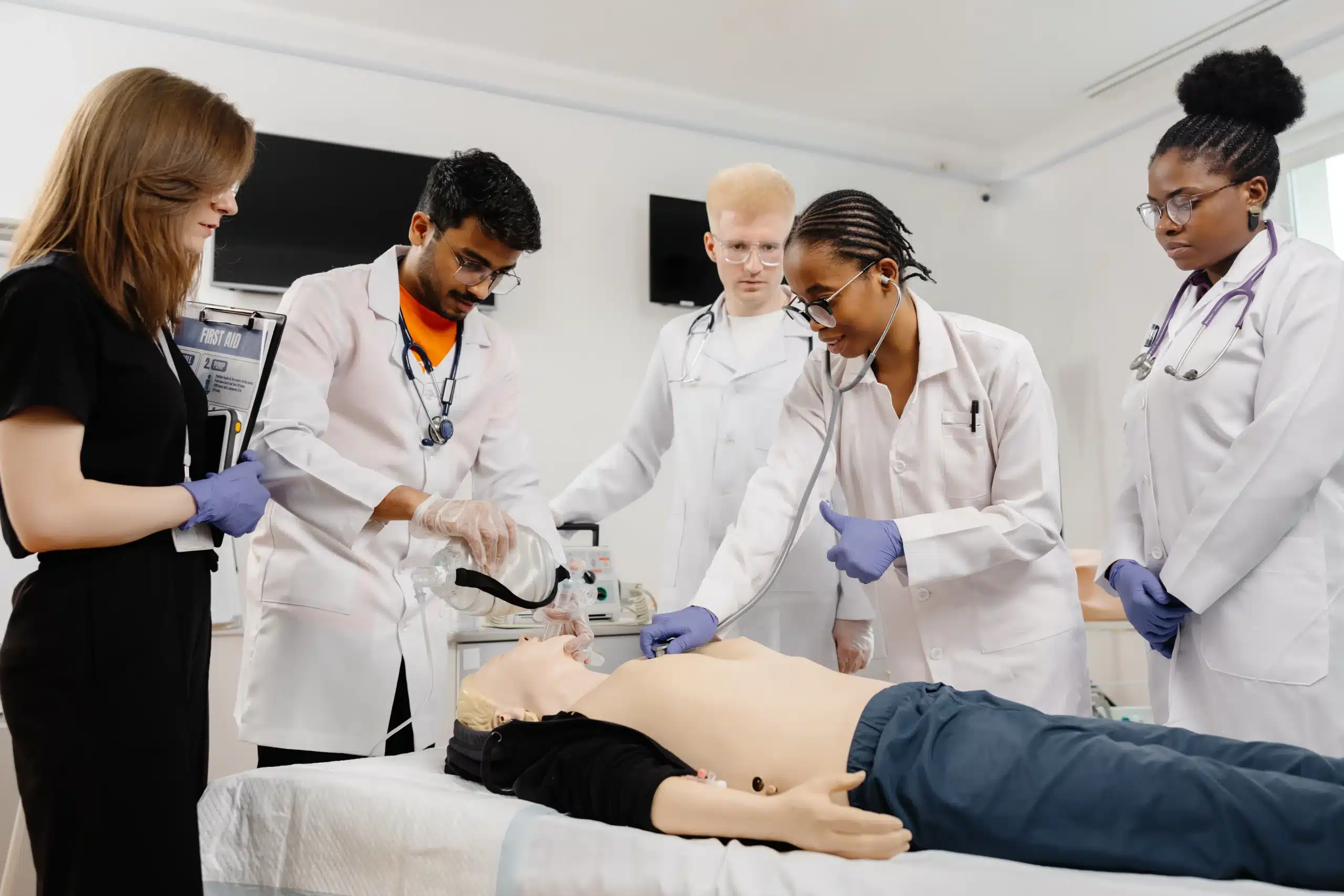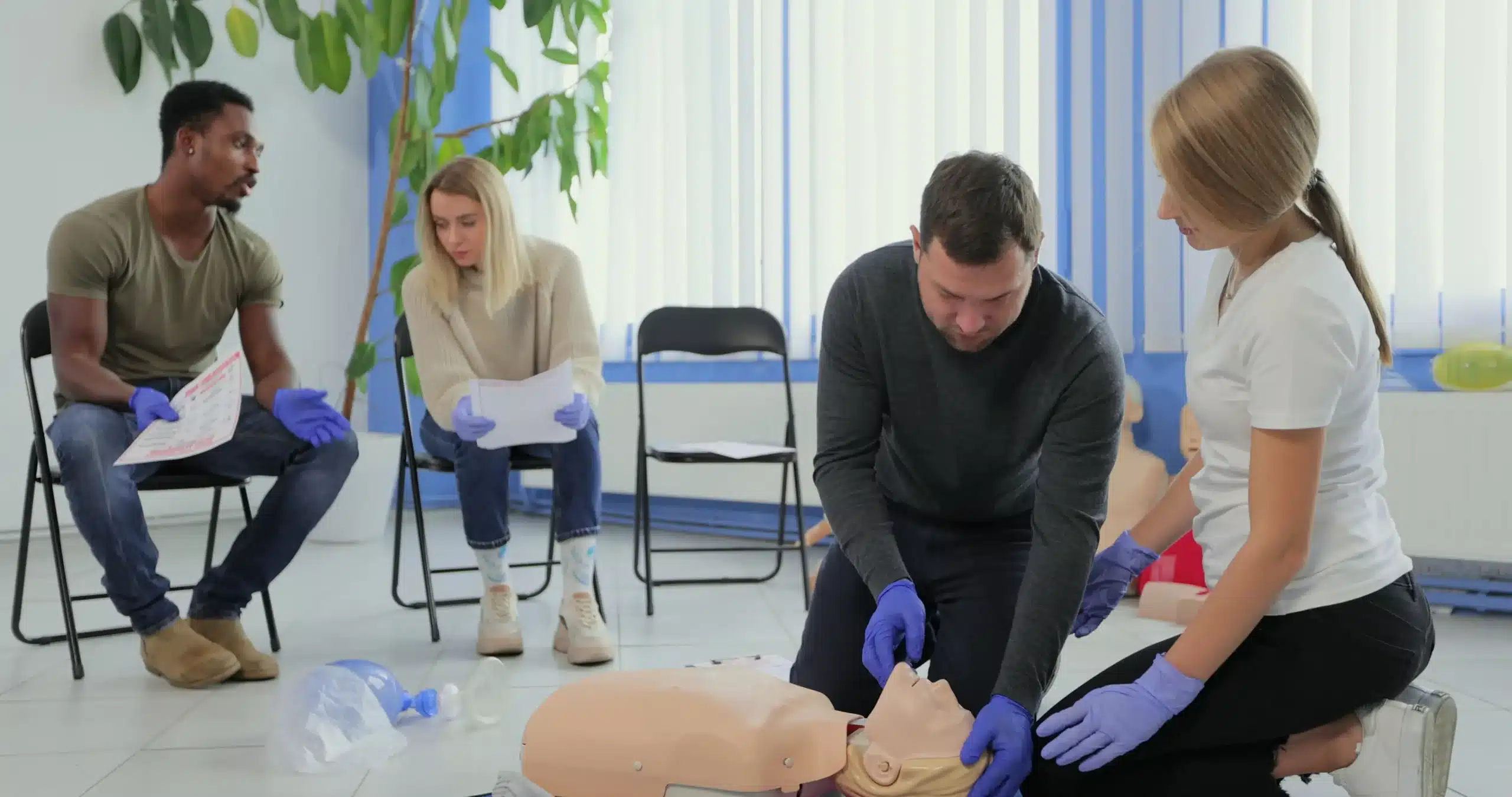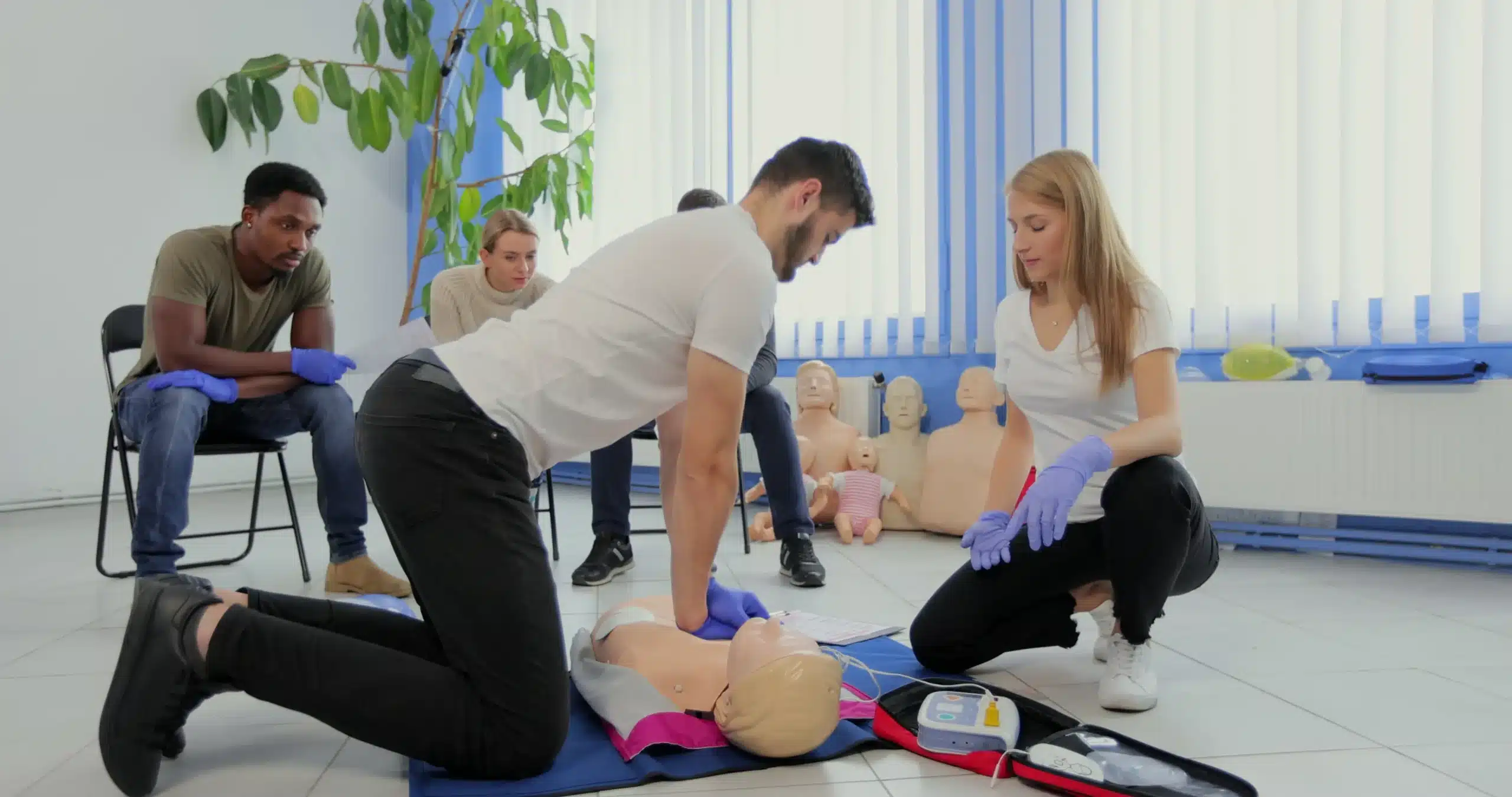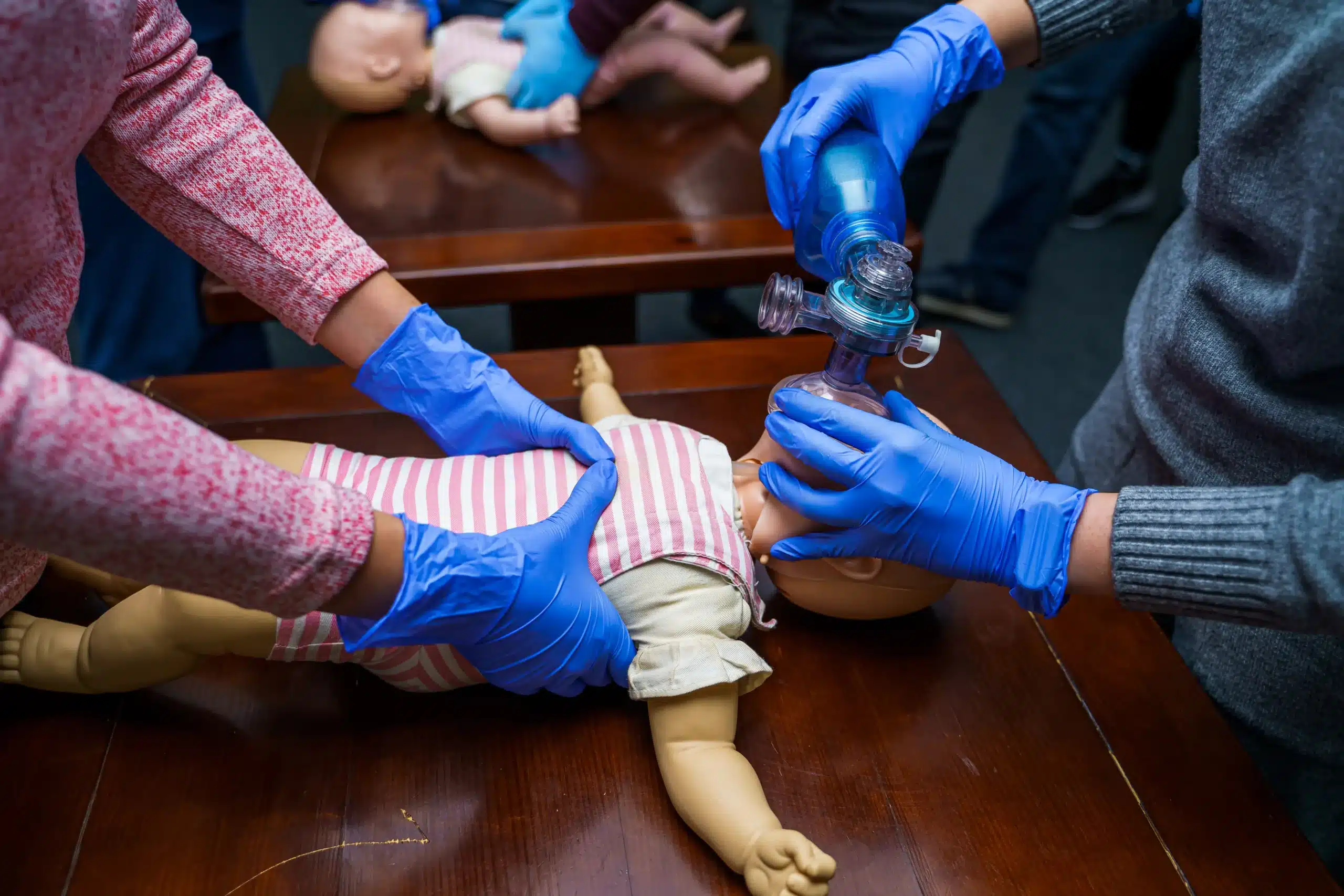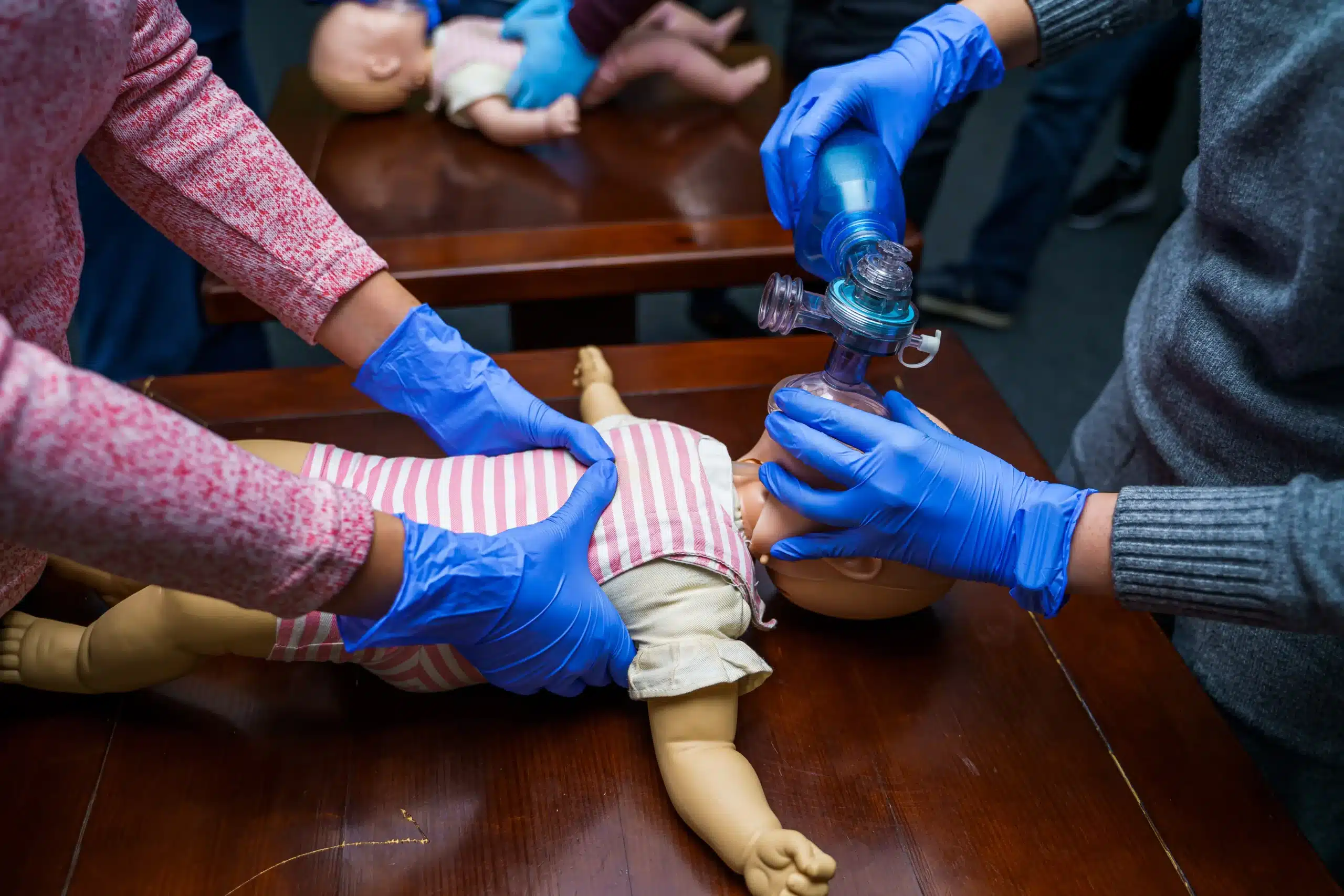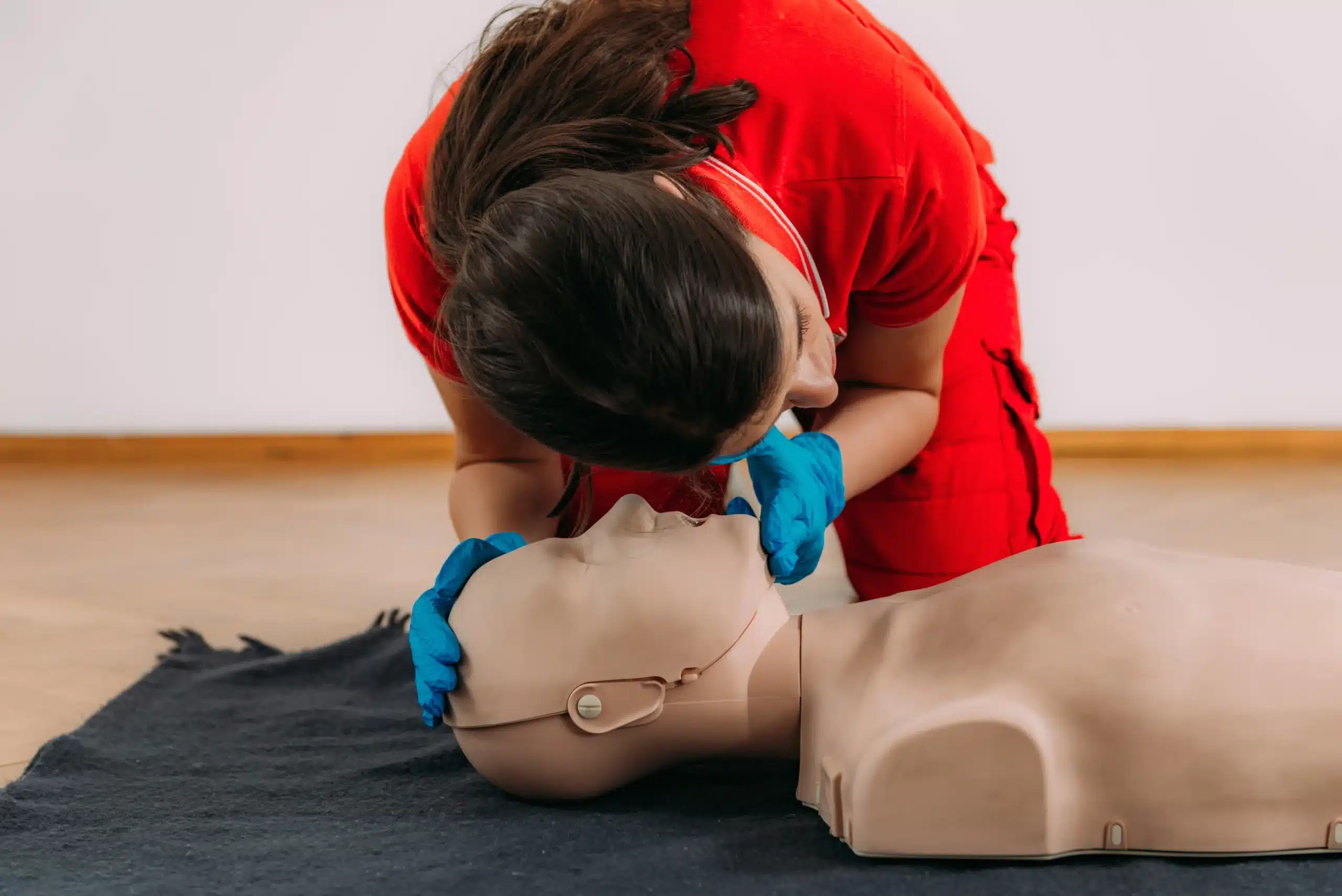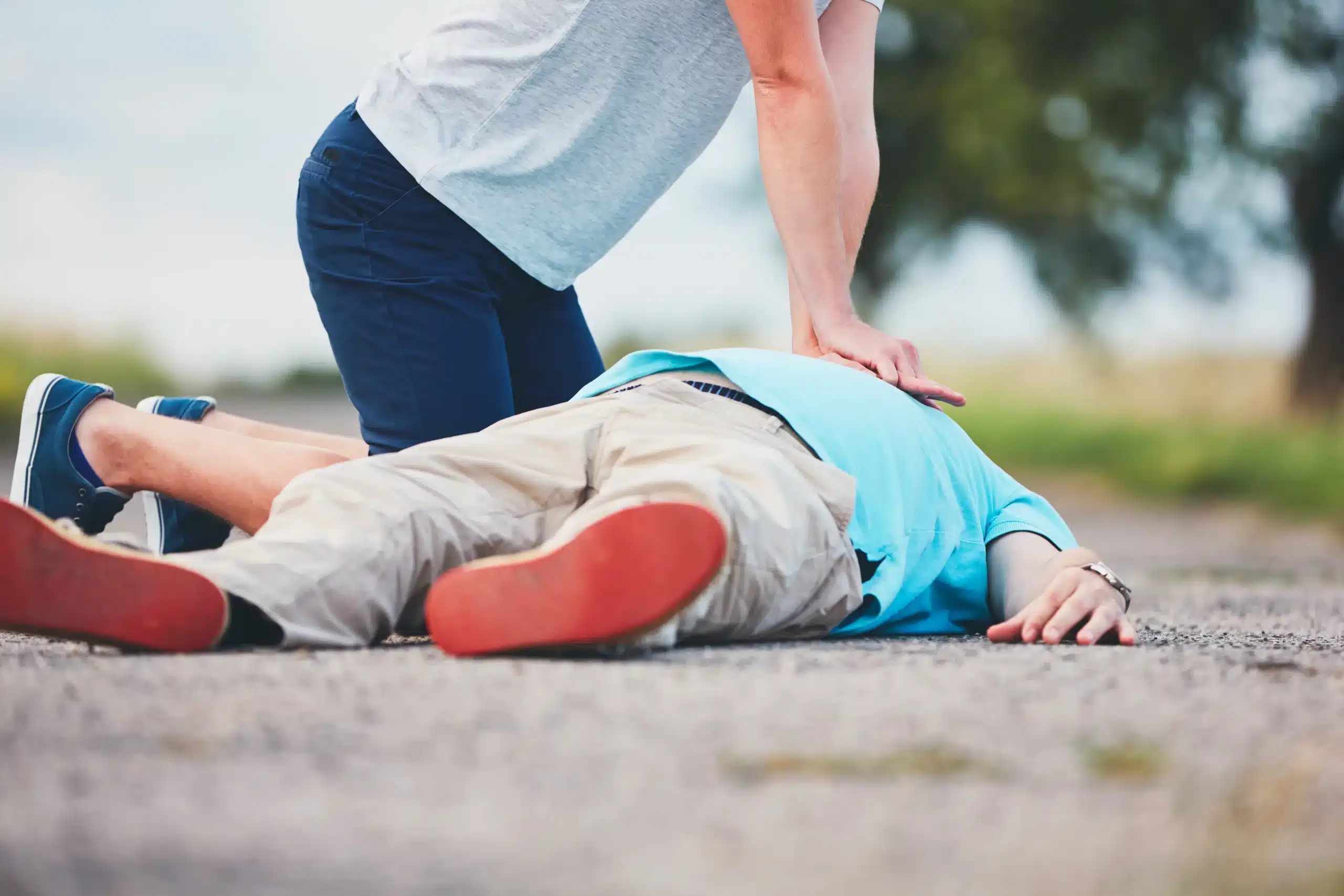We’ve all been there—a sudden medical situation arises, and we’re left feeling unsure and helpless. But what if you could respond with confidence and competence? First-aid training empowers you to do just that. If you’re looking for “first-aid classes near me,” this article is your comprehensive guide to finding the perfect course. We’ll explore the various types of first-aid training, from basic first aid and CPR to more specialized certifications. We’ll also discuss how to choose a reputable provider, what to expect in a class, and the long-term benefits of becoming certified. Take the first step towards becoming a more prepared and confident individual—you never know when your skills might make a difference.
Key Takeaways
- First-aid training offers a range of options: From basic life support to specialized certifications like ACLS and PALS, find a course that matches your needs and career goals. Explore in-person, online, or blended learning formats to fit your schedule.
- First-aid skills empower you to make a difference: Build confidence in your ability to respond to emergencies and provide essential care until professional help arrives. These skills are valuable assets in personal and professional settings.
- Choose a reputable provider for your training: Look for certifications from recognized organizations like the American Heart Association to ensure you receive high-quality instruction and a respected credential. Consider factors like cost, location, and schedule when selecting a provider.
What are First-Aid Classes?
First-aid classes equip you with the skills to handle medical emergencies. From minor injuries to life-threatening situations, these courses empower you to provide immediate care before professional help arrives. Several types of first-aid classes cater to different needs and skill levels. Let’s explore some of the common options.
Basic First Aid
Basic first-aid courses offer foundational knowledge and skills applicable in various situations. These courses typically cover essential techniques like CPR, wound care, and managing common medical emergencies such as burns, cuts, and sprains. Basic first aid training is valuable for anyone, regardless of profession, providing practical skills you can use in everyday life. It’s especially helpful for employees, managers, and anyone who wants to be prepared to assist in an emergency. For basic first aid training and certification, consider checking out local providers or established organizations like the American Red Cross.
CPR and AED Training
CPR and AED training focuses on life-saving techniques for cardiac arrest and other respiratory emergencies. You’ll learn how to perform Cardiopulmonary Resuscitation (CPR) and use an Automated External Defibrillator (AED). CPR and AED certification, often a requirement for healthcare professionals, validates your skills according to nationally recognized standards. Even if not required for your job, this training gives you the confidence to respond effectively during a crisis. The American Heart Association offers comprehensive CPR and AED training programs.
Specialized First-Aid Courses
Specialized first-aid courses delve into advanced techniques tailored to specific professions and situations. Courses like Advanced Cardiovascular Life Support (ACLS) and Pediatric Advanced Life Support (PALS) are designed for healthcare providers, childcare professionals, and those who require more in-depth knowledge. These certifications equip participants with the skills to manage complex medical emergencies and provide specialized care. They build upon the fundamentals of basic first aid and CPR, offering a higher level of expertise for critical situations. ACLS courses through providers like Merced CPR Classes can provide the advanced training you need.
Find First-Aid Classes Near You
Finding the right first-aid class involves a bit of research to ensure it meets your needs and schedule. Here’s how to get started:
Search Online
Start your search online. Many organizations offer online search tools to locate first-aid classes near you. You can often filter by location, date, time, and specific course type. The American Red Cross website, for example, has a comprehensive search tool to find classes. This allows you to quickly compare options and find a class that fits your schedule and location. Don’t forget to check local community centers and hospitals, as they often host first-aid training sessions.
Explore Local Resources
Beyond large organizations, explore local resources. Independent training providers often offer more flexible scheduling and competitive pricing. Merced CPR Classes, for instance, provides a variety of courses with a low price guarantee. Check if your city has similar local providers. These local businesses often cater to the specific needs of their community, offering specialized courses or convenient class times. This can be especially helpful for those with busy schedules or specific training requirements.
Evaluate Provider Credentials
When choosing a first-aid class, it’s crucial to evaluate the provider’s credentials. Look for certification from reputable organizations like the American Heart Association (AHA). Earning AHA certification ensures your training meets nationally recognized standards, which is often a requirement for healthcare jobs. A credible provider will clearly list their certifications and affiliations on their website. This ensures you receive high-quality training that meets industry standards and equips you with the skills to respond effectively in emergencies.
How Much Does First-Aid Training Cost?
Naturally, one of your first questions might be, “How much will this cost?” It’s smart to understand pricing before committing to a class. Several factors influence first-aid training costs, and I’ll break them down for you here.
Price Ranges
First-aid training costs vary based on the course type and depth of instruction. Basic first-aid and CPR classes typically range from $50 to $150. More advanced courses, like ACLS or those including more comprehensive first aid, can cost $200 or more. Think of it like any other skill—more specialized training usually comes with a higher price tag. It’s worth checking if the cost of your chosen course includes training materials, instructor fees, and the certification exam. Merced CPR Classes offers a low price guarantee.
Group Discounts and Special Offers
If you’re training with a group, say for work or a community organization, you might be eligible for a discount. Many providers offer reduced rates for group training sessions. This can be a great way to make the training more affordable while learning alongside your colleagues or friends. Keep an eye out for special offers and promotions, too. Sometimes, providers will run seasonal discounts or offer package deals that combine multiple certifications.
Debunking Cost Myths
There are some common misconceptions about first-aid training costs. Some people believe it’s prohibitively expensive, preventing them from getting certified. The truth is, there are options available for most budgets. Another myth is that all courses are created equal, regardless of price. While cost is a factor, it’s important to prioritize quality instruction and a recognized certification, like those offered by the American Heart Association. Don’t let cost be a barrier—explore the options available and find a course that fits your needs and budget. Remember, investing in first-aid training is investing in yourself and your community.
Choose the Right Class Format
Finding the right first-aid class means choosing a format that matches your learning style and schedule. Let’s explore the most common options: in-person, online, and blended learning. Each has its own advantages, so consider what works best for you.
In-Person Training
In-person training offers a hands-on learning experience you won’t find with some online-only options. This direct interaction is invaluable for mastering essential first-aid techniques and building confidence in your abilities. As CPR Certification Dallas points out, being in a classroom allows students to practice skills in real time and get immediate feedback from certified instructors. The classroom setting also provides opportunities to ask questions and learn from others’ experiences. If you thrive in a structured, interactive environment, in-person training might be your best bet. Merced CPR Classes offers a variety of in-person courses to fit your needs.
Online Courses
If flexibility is key, online first-aid certification courses offer a convenient alternative. They allow you to learn at your own speed and revisit materials as needed, making them ideal for busy individuals who need to fit training around other commitments. MyCPR NOW highlights the cost-effectiveness and self-paced nature of online learning as major benefits. However, keep in mind that online courses may not offer the same level of hands-on practice as in-person classes.
Blended Learning
Blended learning combines online learning with face-to-face instruction, creating a well-rounded learning experience. It allows for a deeper dive into complex topics online while still providing practical, hands-on training in person. The Prepare Center notes that this blended approach is particularly effective for first-aid education. A study published in the Resuscitation Journal30292-1/fulltext) confirms this, showing that blended learning can significantly improve both knowledge and confidence in first-aid skills. This approach offers a balanced and effective way to develop a strong foundation in first aid.
What to Expect in a First-Aid Class
Knowing what to expect can help you feel prepared and confident going into your first-aid training. Here’s a glimpse at the typical flow of a first-aid class:
Course Structure and Duration
First-aid courses cover essential life-saving techniques, from treating minor injuries like cuts and burns to managing more serious situations like choking and cardiac arrest. You’ll learn about Cardiopulmonary Resuscitation (CPR) and how to use an Automated External Defibrillator (AED). Many courses also include instruction on Basic Life Support (BLS). Some may even touch on Advanced Cardiovascular Life Support (ACLS) and Pediatric Advanced Life Support (PALS), giving you a well-rounded skillset. Merced CPR Classes offers a range of these courses. The duration of your class will depend on the specific course and level of certification you’re pursuing.
Hands-On Practice
First-aid training isn’t just about lectures and textbooks. A significant portion of your class will involve hands-on practice, allowing you to develop the muscle memory and practical skills necessary to respond effectively in a real emergency. You’ll work with training manikins to practice CPR, bandaging, and other essential techniques. This practical experience is crucial for building confidence and ensuring you can apply your knowledge under pressure. The American Heart Association (AHA) certification you’ll earn through programs like those offered by Merced CPR Classes signifies that your training meets nationally recognized standards—a frequent requirement for healthcare professions and various other fields.
Assessment and Certification
Most first-aid courses conclude with an assessment to evaluate your understanding of the material and your ability to perform the techniques you’ve learned. This typically involves both a written exam and a practical demonstration. Upon successful completion, you’ll receive an AHA certification card, validating your skills and knowledge. This certification is usually valid for two years. After that, you’ll need to take a refresher course to stay up-to-date. Check with your chosen provider for specific details on certification costs and renewal processes.
First-Aid Certifications: What They Mean and How Long They Last
So, you’ve completed a first-aid class—congrats! Now, what does your certification actually mean, and how long is it good for? Let’s break it down.
Types of Certifications
Several organizations offer first-aid certifications. Merced CPR Classes offers a range of American Heart Association (AHA) certifications, including CPR, BLS, ACLS, PALS, and First Aid. These certifications are widely recognized and respected. You’ll also find other providers like the American Red Cross and the National Safety Council offering similar certifications. It’s a good idea to check specific course details to ensure the certification aligns with your workplace requirements. For example, some healthcare jobs may require AHA certification specifically.
Certification Validity
Most first-aid certifications are valid for about two years. This timeframe is designed to keep your knowledge and skills fresh. Think of it like a driver’s license—it needs to be renewed to make sure everyone on the road is up to date with current regulations. Similarly, renewing your first-aid certification ensures you’re prepared to handle emergencies with the most current best practices. Earning AHA certification demonstrates you’ve met nationally recognized standards, which is often a requirement for many professions.
Renew Your Certification
When your certification nears its expiration date, you’ll need to recertify. The recertification process usually involves taking another course, often a shorter refresher course than the initial certification class. This allows you to brush up on your skills and learn about any updated guidelines. Check with your certifying organization or Merced CPR Classes for details on recertification courses. Staying current with your certification demonstrates your commitment to providing effective first aid and can be a valuable asset in your professional life.
Prepare for Your First-Aid Class
Getting ready for your first-aid class involves a little more than just signing up. A bit of preparation beforehand can make a real difference in how much you learn and retain. Here’s how to get ready:
What to Bring
First things first, check with your chosen training provider—whether it’s Merced CPR Classes, the American Red Cross, or another organization—about any specific requirements. Generally, comfortable clothing is essential since you’ll be actively participating in demonstrations and practice scenarios. A notebook and pen are always helpful for jotting down key takeaways, though many courses offer printed materials. Bring a water bottle to stay hydrated throughout the day.
Study Tips
While you don’t need to be a medical expert before stepping into a first-aid class, familiarizing yourself with basic concepts can give you a head start. Reviewing topics like CPR and recognizing the signs of a heart attack can be especially beneficial. Earning your AHA certification ensures your training meets nationally recognized standards, which is often a requirement for healthcare jobs and other professions. If your schedule is tight, consider the convenience of online first-aid certification courses. These can be a great way to learn the basics at your own pace.
Mindset for Learning
Walking into your first-aid class with the right mindset can truly transform your learning experience. It’s important to dispel any preconceived notions or anxieties you might have. First aid isn’t about memorizing complex medical procedures; it’s about equipping yourself with the knowledge and skills to confidently handle common emergencies. Approach the class with an open mind and a willingness to learn. This will allow you to absorb the information effectively and build your confidence. The goal is to be prepared and ready to help when needed. Understanding common first-aid myths can help foster a more accurate understanding of the importance and accessibility of this essential training. Being proactive and prepared is key to ensuring you’re ready to respond effectively in any situation.
Benefits of First-Aid Training
Learning first aid is an investment in yourself and your community. It equips you with practical skills to handle medical emergencies and builds valuable life skills that extend beyond the classroom. Let’s explore some key advantages of becoming first-aid certified.
Build Confidence
First-aid training empowers you to confidently respond to emergencies. Instead of feeling helpless or unsure, you’ll have the knowledge and skills to assess situations and provide immediate care. This confidence can be invaluable, not just in dramatic situations but also in everyday life—from treating minor cuts and burns to handling more serious incidents. Knowing how to administer proper first aid can truly make a difference, transforming you from a bystander into a capable responder. As Grace CPR Compliance points out, “First aid and CPR are critical skills that everyone should learn,” so take the first step and sign up for a class. Dispelling common first-aid myths is a key part of building this confidence, allowing you to react effectively when needed.
Advance Your Career
First-aid certification can significantly enhance your career prospects. Many professions, especially in healthcare, childcare, and education, require or prefer candidates with first-aid and CPR qualifications. Earning your AHA certification demonstrates that your training meets nationally recognized standards, giving you a competitive edge in the job market. Even if not explicitly required, having first-aid skills shows employers you’re proactive, prepared, and committed to safety—qualities valued in any field. Plus, first-aid training can open doors to specialized roles or promotions within your current company. For example, becoming CPR certified can be a valuable asset for healthcare workers in Maryland, where such skills are highly sought after by healthcare institutions. Consider first-aid training as a professional development opportunity that can strengthen your resume and expand your career options.
First-Aid Training Providers
Finding the right first-aid training provider is crucial for a positive learning experience. Here’s a look at some well-known providers and what they offer:
Merced CPR Classes
Merced CPR Classes offers a comprehensive range of American Heart Association (AHA) certification courses, including CPR, BLS, ACLS, PALS, and First Aid. They prioritize affordability and high-quality training, backed by a low price guarantee. This makes them a practical choice for individuals and groups in Merced, Turlock, and Atwater, CA seeking convenient and cost-effective training. Review their course preparation resources to get a head start. They also offer group discounts, making it an economical option for workplaces or community organizations. You can find their BLS and ACLS courses directly on their site.
American Red Cross
The American Red Cross is a trusted name in emergency preparedness and response. They offer a variety of first-aid and CPR certification courses designed to equip individuals with the skills to handle various emergencies. Their widespread presence makes finding a class near you relatively easy.
American Heart Association
The American Heart Association is another reputable organization providing CPR, first-aid, and advanced cardiovascular life support training. AHA certification is widely recognized and often required for healthcare professionals and other specific occupations. Their courses adhere to evidence-based guidelines, ensuring you receive up-to-date and effective training. You can explore their course offerings to find one that fits your needs.
National Safety Council
The National Safety Council offers a range of first-aid training programs catering to diverse needs, from workplace safety to community preparedness. Their programs often focus on injury prevention and creating safer environments. Explore their website for more information on their training programs.
St. John Ambulance
St. John Ambulance is a prominent international organization known for its first-aid and emergency medical services. They provide a variety of first-aid courses tailored to different audiences, including workplace training and community programs. Their training emphasizes practical skills and emergency response. Visit their site to learn more about their courses and community programs.
Related Articles
- First-Aid Training in Merced: Your Complete Guide – Merced CPR Classes
- First Aid in Atwater: Your Guide to Local Training – Merced CPR Classes
- Best Online CPR Classes in Atwater, CA – Merced CPR Classes
- CPR Classes in Merced: Your Complete Guide – Merced CPR Classes
- CPR Certification in Merced: Your Complete Guide – Merced CPR Classes
Frequently Asked Questions
What’s the difference between basic first aid and advanced first aid? Basic first aid covers essential skills for common injuries like cuts, burns, and sprains, while advanced courses like ACLS and PALS delve into more complex medical emergencies and are often geared towards healthcare providers. Basic first aid is valuable for anyone, while advanced training is typically for specific professional needs.
How do I choose the right first-aid class for me? Consider your specific needs and goals. If you need basic skills for everyday life, a standard first-aid and CPR course might suffice. Healthcare professionals or those seeking advanced skills should explore specialized certifications like ACLS or PALS. Also, think about your learning style and schedule. In-person classes offer hands-on practice, while online courses provide flexibility.
How much should I expect to pay for first-aid training? Costs vary depending on the course type and provider. Basic first aid and CPR classes usually range from $50 to $150, while more advanced courses can be more expensive. Look for providers like Merced CPR Classes that offer a low price guarantee or group discounts.
How long is a first-aid certification valid, and how do I renew it? Most certifications are valid for two years. Recertification typically involves taking a refresher course to update your skills and knowledge of any new guidelines. Contact your certifying organization or training provider for specific renewal procedures.
What if I have a busy schedule and can’t attend a traditional in-person class? Online and blended learning options offer flexibility for those with busy schedules. Online courses allow you to learn at your own pace, while blended learning combines online modules with in-person skill sessions. This allows you to fit the training around your other commitments.
